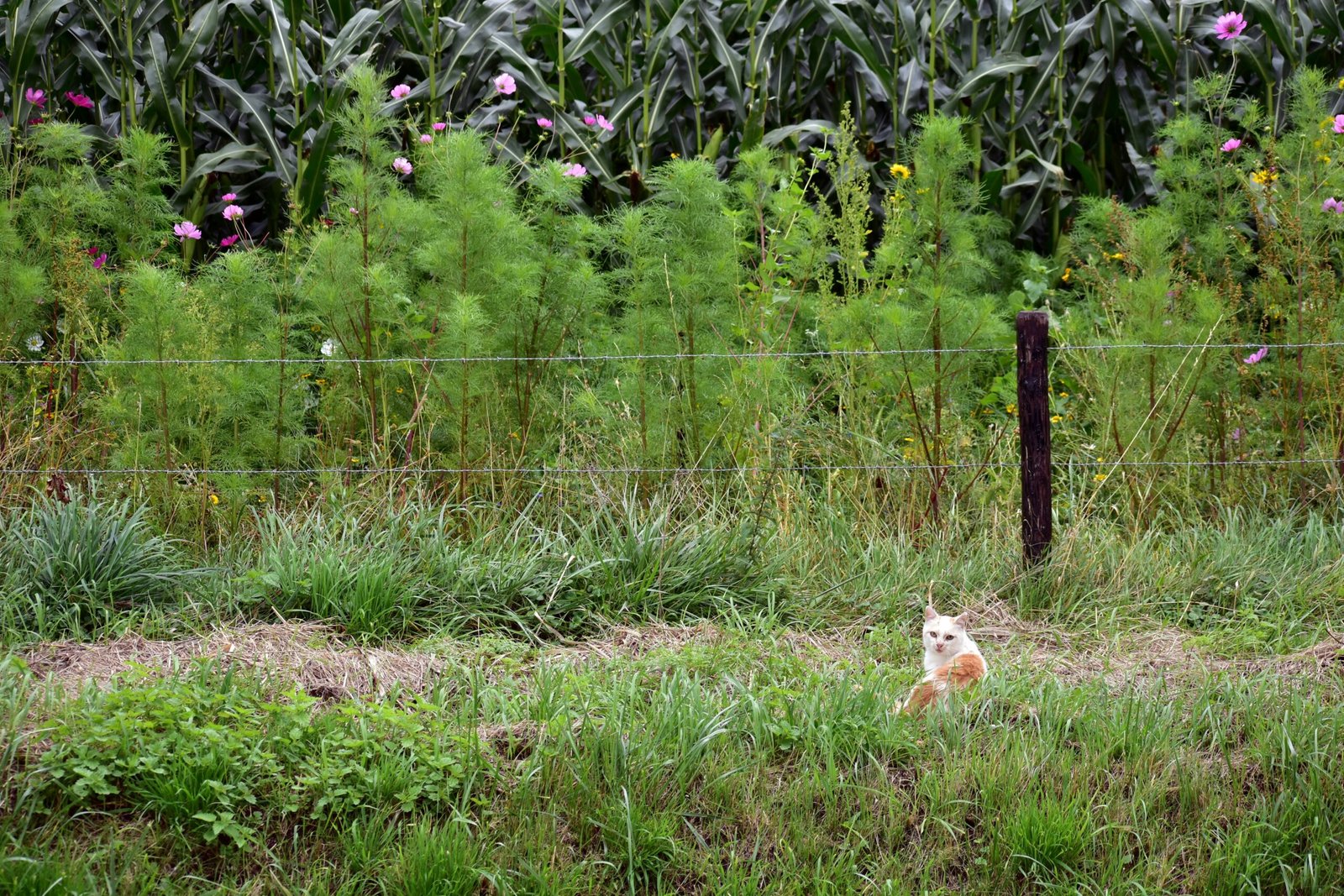Understanding Weeds: Types and Growth Cycle
Weeds are unwanted plants that invade lawns and gardens, often outcompeting desirable grasses for resources such as sunlight, water, and nutrients. Their presence can lead to unsightly lawns and reduced grass vigor. Understanding the types and growth cycles of weeds is essential for effective, natural weed control.
There are several common types of weeds, each with unique characteristics and life cycles. Dandelions, for instance, are perennial weeds known for their bright yellow flowers and deep taproots. These weeds can be particularly challenging to remove because their roots can regenerate if not completely extracted. Dandelions typically bloom in spring and fall, with seeds that disperse via wind, making them prolific spreaders.
Crabgrass is another common weed, often found in lawns. This annual weed germinates in the spring and early summer, thriving in hot, sunny conditions. It forms low-growing mats that can quickly dominate bare or thin spots in the lawn. Effective control of crabgrass involves preventing seed germination through proper lawn care practices and pre-emergent herbicides.
Clover, a perennial weed, is easily recognizable by its trifoliate leaves and small white flowers. While clover can fix nitrogen in the soil, which benefits other plants, its aggressive growth can crowd out grass species. It tends to thrive in lawns with low fertility and can spread through seeds and creeping stems.
Understanding the life cycles of these weeds is crucial for natural weed management. Perennial weeds like dandelions and clover have deep root systems that require persistent removal efforts, whereas annual weeds like crabgrass can be managed by interrupting their germination and growth cycles. By recognizing the specific characteristics and growth stages of these weeds, gardeners can implement targeted and effective natural weed control strategies, leading to healthier, more resilient lawns.
Natural Prevention Methods
Prevention is a key strategy in managing weeds effectively, and natural prevention methods can yield sustainable and long-lasting results. The first step in weed prevention is maintaining soil health. Healthy soil is rich in nutrients and has a balanced pH, which creates an unfavorable environment for weeds while supporting grass and other beneficial plants. Regularly testing your soil and amending it with organic matter such as compost can significantly improve its quality.
Proper lawn care techniques are essential for weed prevention. Mowing at the correct height ensures that your grass remains healthy and competitive against weeds. For most grass types, the ideal mowing height is around three inches. This height shades the soil, reducing the amount of sunlight reaching weed seeds and hindering their growth. Additionally, consistent and deep watering encourages strong root systems, making your lawn more resilient against weed invasion.
Mulching is another effective natural prevention method. Applying a layer of mulch around your plants and garden beds helps retain soil moisture, regulate temperature, and suppress weed growth. Organic mulches, such as wood chips, straw, and grass clippings, gradually decompose and enrich the soil with nutrients, further promoting plant health and reducing the likelihood of weed proliferation.
Maintaining a healthy lawn ecosystem is crucial for natural weed control. Promoting beneficial microorganisms and plants can create a self-sustaining environment that naturally suppresses weeds. Introducing mycorrhizal fungi and other beneficial microbes can enhance nutrient uptake and improve soil structure. Additionally, planting cover crops or companion plants can outcompete weeds for resources and space, effectively reducing their presence.
By focusing on these natural prevention methods, you can cultivate a robust and healthy lawn that minimizes weed growth and reduces the need for chemical interventions. Prioritizing soil health, proper lawn care, mulching, and fostering a balanced ecosystem will help you achieve a lush, weed-free lawn naturally.
Natural Weed Removal Techniques
Once weeds have taken root in your lawn, employing natural weed removal techniques can be highly effective and environmentally friendly. Manual weeding is one of the most straightforward methods. It involves pulling out weeds by hand or using a weeding tool, ensuring that the roots are completely removed to prevent regrowth. The best time for manual weeding is after rain or watering when the soil is moist, making it easier to extract the entire weed.
Another effective method is using homemade herbicides. One popular recipe involves a mixture of vinegar, salt, and dish soap. To create this herbicide, combine one gallon of white vinegar with one cup of salt and one tablespoon of liquid dish soap. Mix thoroughly and pour the solution into a spray bottle. Apply this mixture directly to the weeds on a sunny day, as the sun will enhance the herbicidal properties of the vinegar, leading to quicker results. Be cautious when applying, as this solution can harm desirable plants as well.
Natural weed barriers can also prevent weeds from establishing themselves. Mulching is a common technique that involves spreading organic material such as wood chips, straw, or compost over the soil. This not only suppresses weed growth by blocking sunlight but also improves soil health. For areas where you do not wish any plant growth, consider using landscape fabric or cardboard as a more permanent solution.
Regular maintenance and observation are crucial in preventing weed recurrence. Conduct routine checks of your lawn and promptly address any new weed growth. This proactive approach, combined with the aforementioned natural weed removal techniques, will help maintain a healthy, weed-free lawn. By integrating these practices, you can effectively manage weeds without resorting to chemical herbicides, promoting a safer and more sustainable environment.
Effective long-term weed management strategies are crucial for maintaining a healthy, weed-free lawn. One of the cornerstone practices in achieving this is the establishment of a comprehensive, tailored weed management plan. Seasonal lawn care routines are vital components of such a plan. During the spring, focus on aerating the soil and applying a pre-emergent herbicide to prevent weed seeds from germinating. Throughout the summer, regular mowing at the appropriate height can prevent weeds from establishing by depriving them of sunlight. In the fall, overseeding with grass varieties that are well-suited to your region can outcompete weeds, while proper fertilization strengthens the lawn before winter dormancy.
Incorporating cover crops into your lawn management plan can also offer significant benefits. Cover crops like clover or rye grass can suppress weeds by outcompeting them for resources such as light, water, and nutrients. These plants can also improve soil health by adding organic matter and enhancing soil structure, which in turn supports robust grass growth and reduces weed proliferation.
Companion planting, often used in garden settings, can be equally effective in lawn care. Integrating certain plants that repel weeds or enhance the growth of your primary grass species can create a more resilient lawn ecosystem. For example, planting white clover can fix nitrogen in the soil, benefiting the grass and crowding out weeds simultaneously.
Ongoing monitoring and adaptation of your weed management strategies are essential for long-term success. Regularly inspecting your lawn for signs of weed activity allows for timely intervention before weeds become established. Adjusting your management plan based on seasonal changes, new weed species, or shifts in lawn health ensures that your lawn remains robust and weed-free over time. By employing these sustainable, long-term weed management strategies, you can maintain a healthy, green lawn with minimal reliance on chemical herbicides.
If you’re interested in purchasing the item you seek, please click the link for additional details: #americanachoice.
https://amzn.to/3SBN3Oy
AFFILIATE DISCLOSURE: I am an affiliate for this company, I am not a paid employee.
I may receive a commission if you click a link on this page and choose to purchase something.
You can rest assured I will only share things I believe in and will be valuable to you.



